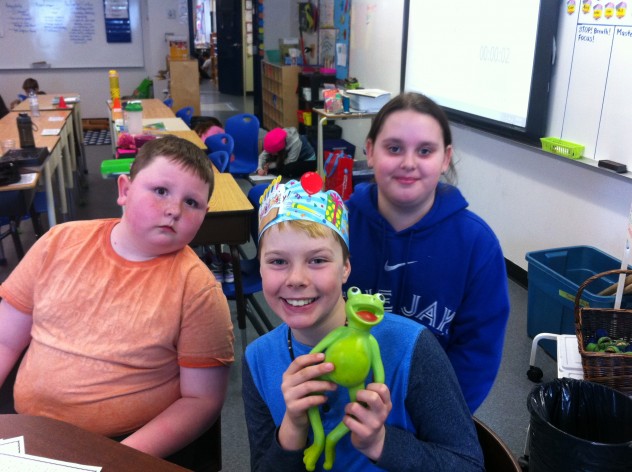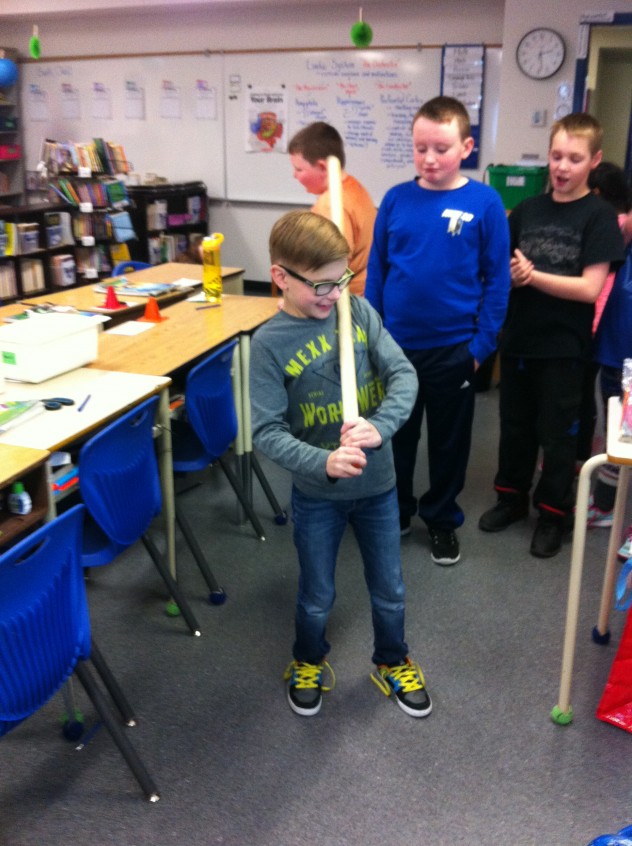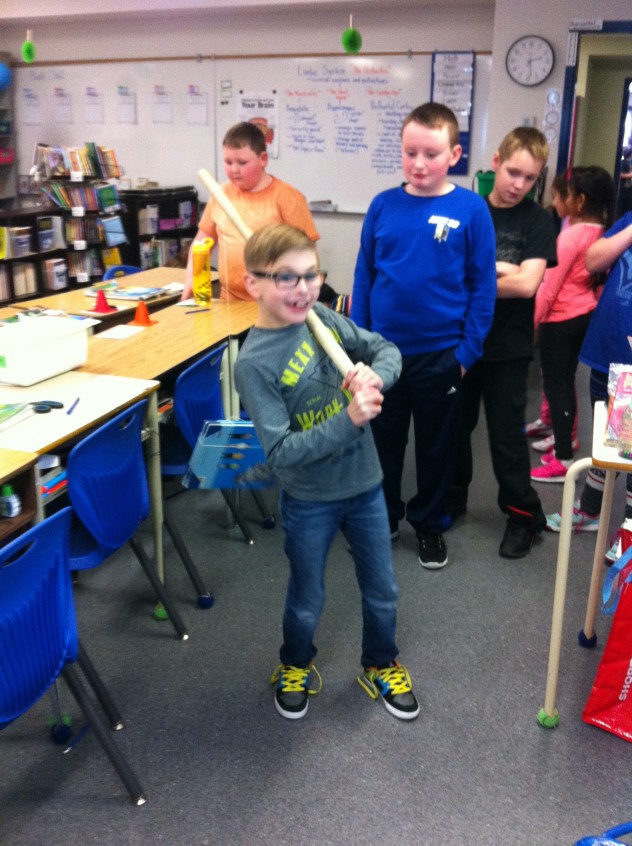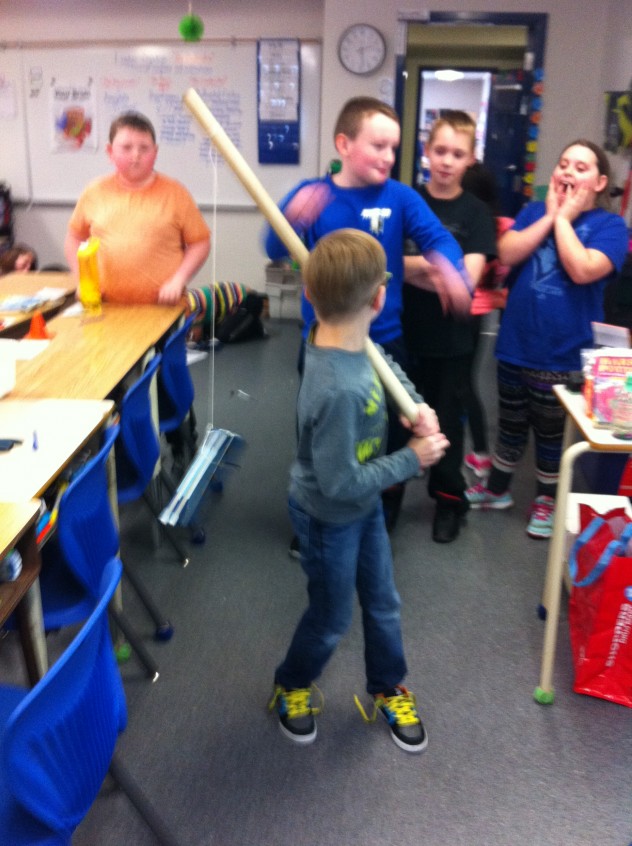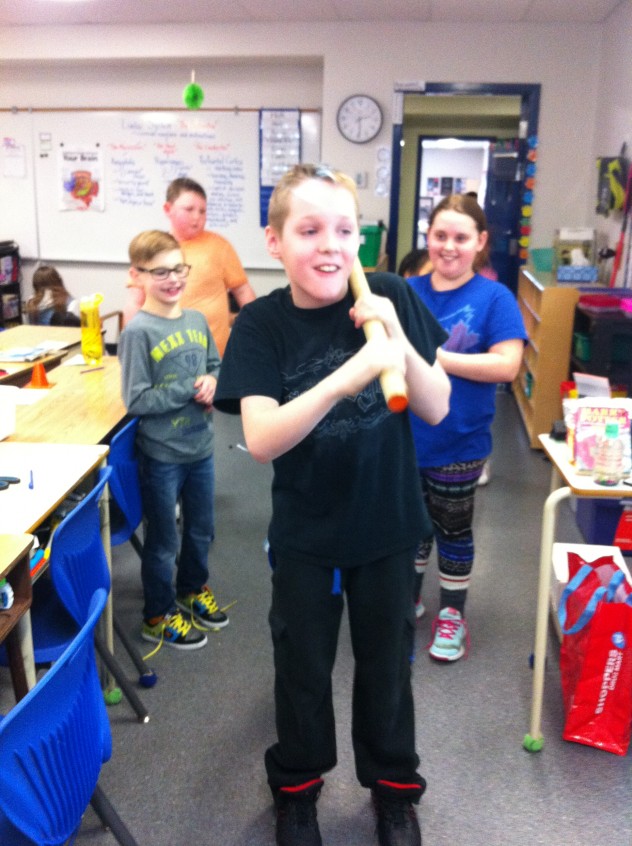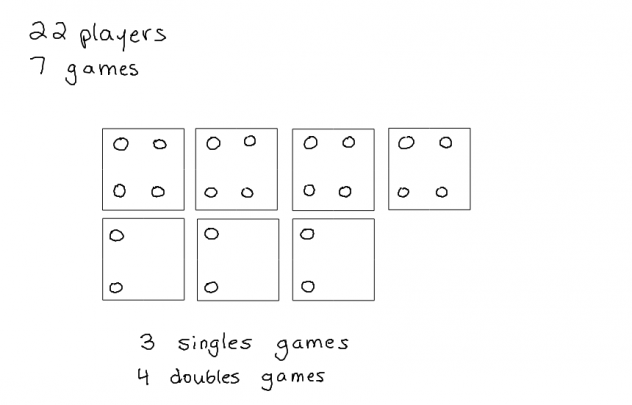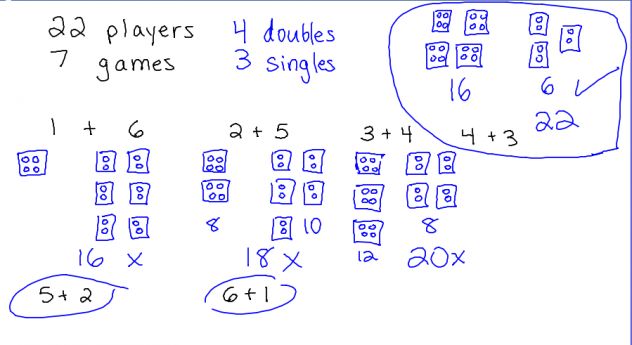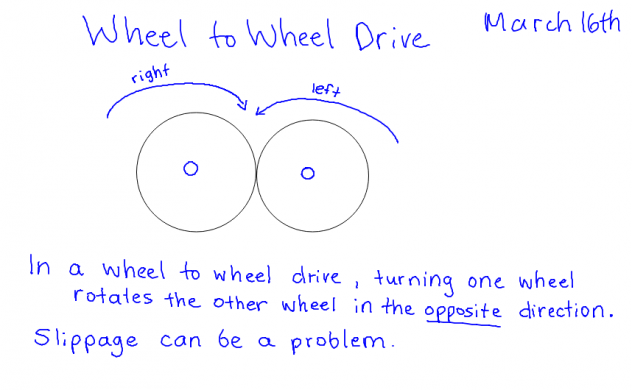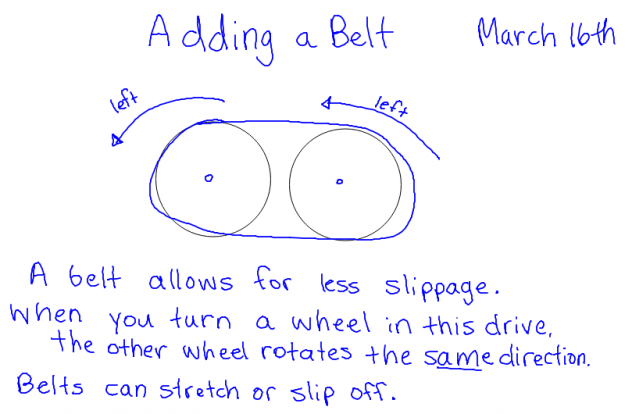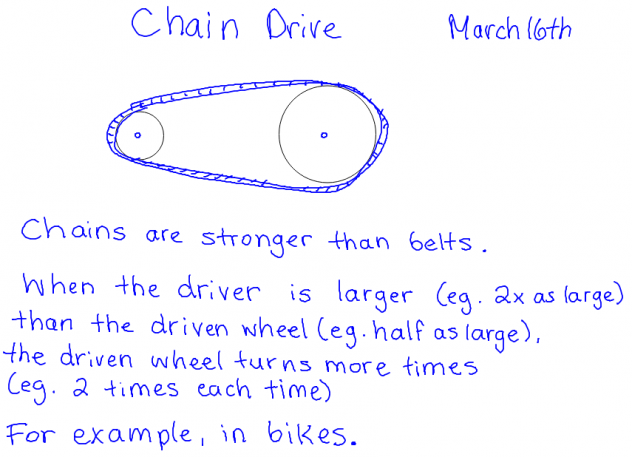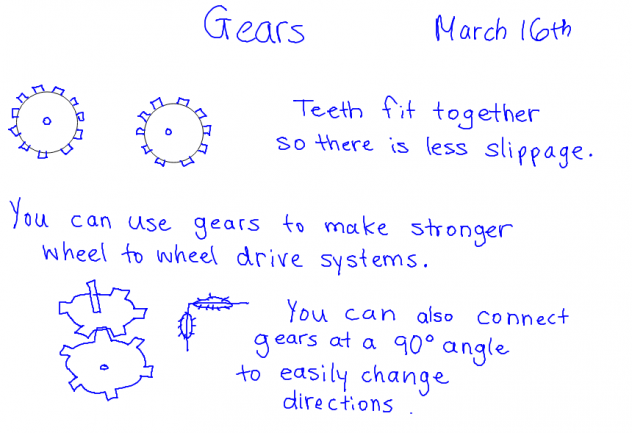Did You Know…? Four was usually written ‘IIII’ in classical Latin, not IV. The latter was mainly a medieval usage.
Good evening,
Our Grade 4 students began working on posing and solving multiplication and division word problems today. Here is the example we worked on together:
In order to solve this problem, we used two strategies: make a model and guess-and-test. Here is our model:
We began by drawing 7 squares for the players to play on. Then we filled each of the squares with 2 players, because we knew there were going to be some singles games. This meant we had 14 players (2 players x 7 games = 14 players altogether). Next we started adding players two at a time to make doubles games. After we created one doubles game we had 16 players, then 18 players, then 20 players, then finally 22 players! Looking at our model, we could see that we would have 4 doubles games (4 players x 4 games = 16 players altogether) and 3 singles games (2 players x 3 games = 6 players altogether), meaning that there would be 22 players playing in 7 games in the tournament (16 doubles players + 6 singles players = 22 players). The next strategy we tried was a guess and test strategy:
To use this strategy we thought about what combinations of numbers would add up to 7, since there would be 7 games altogether (some doubles and some singles). We came up with 1+6, 2+5, 3+4, 4+3, 5+2, and 6+1. Then we used these to help guess and test. When we had 1 doubles game (4 players x 1 game = 4 players altogether) and 6 singles games (2 players x 6 games = 12 players altogether), we only had 16 players (4 doubles players + 12 singles players = 16 players in total). So that combination didn’t work. Next we tried 2 doubles games (4 players x 2 games = 8 players altogether) and 5 singles games (2 players x 5 games = 10 players altogether); we only had 18 players (8 doubles players + 10 singles players = 18 players altogether). So that combination didn’t work. Next we tried 3 doubles games (4 players x 3 games = 12 players altogether) and 4 singles games (2 players x 4 games = 8 players altogether); we only had 20 players (12 doubles players + 8 singles players = 20 players altogether). So that combination didn’t work. We didn’t give up! Next we tried 4 doubles games (4 players x 4 games = 16 players altogether) and 3 singles games (2 players x 3 games = 6 players altogether); we had 22 players! That combination works! So, if there are 22 players playing 7 games, there would be 4 doubles games and 3 singles games. Students were given some practice problems using multiplication and division. Unfinished work went home for homework.
In Science today, Grade 5 students continued to build their Burglar Alarms. Tomorrow is the last day that students are going to have to work on these projects! In Grade 4 we reviewed what we have been learning about drive systems:
Then we began discussing levers. We watched this video to get us started:
Today we learned the following vocabulary words: load, effort, and fulcrum. Then we looked more closely at first class levers. Some examples of first class levers are: scissors, a see-saw, and pliers. These are levers because you have the load on one side of the fulcrum and the effort on the other side of the fulcrum. Then we were able to do two hands on experiments on first class levers. The first experiment we did involved lifting some textbooks with 2 pencils. One pencil was the fulcrum, the other was the arm of the lever. We found that the farther the textbooks were from the fulcrum, the harder it was to lift them. When we moved the fulcrum closer to the load, making a longer arm for the lever, it was much easier to lift the books. Next we practiced lifting some textbooks with a wood dowel. It was heavy! We experimented in using our bodies to make a lever. We used our shoulder as the fulcrum, balancing the load on one side and using our hands to exert the effort force on the other side. The closer the books were to our body and the longer the arm of the lever was, the lighter the books seemed. We will continue to explore levers tomorrow.
We also completed our Paper Bag Book Reports today. Presentations are tomorrow!
Agenda:
Read 20 minutes
Language Arts:
- Paper Bag Book Report Items – tomorrow!!
Math:
- Grade 4 – pg. 114 #1, 2, 4, 6
Science:
- Grade 5 – Electricity and Magnetism Quiz (Friday)
Health:
- pgs. 46-47 – “Red and Green Thoughts” (FRIENDS)
Lion King Permission Forms/$2 – due ASAP (Performance is March 22nd)
Registration Forms – ASAP (They are now late!)
Grade 5/6 Floor Hockey – No Floor Hockey until April
STEM Club – Mondays, Thursdays 3:00-4:00 pm
Grade 5/6 Basketball – Tuesdays, 3:00-4:00 pm
Yearbook Orders – $22 (March 31st)
Family Movie Night – March 18th (Alvin and the Chipmunks), entrance by donation
Family Science Night – March 21st @ 6:00-7:00 pm
Snack Shack – Thursday (buy some snacks to support Gr. 6 trip to Edmonton)
